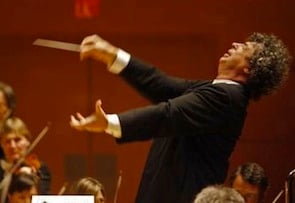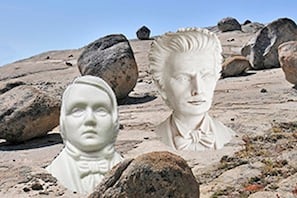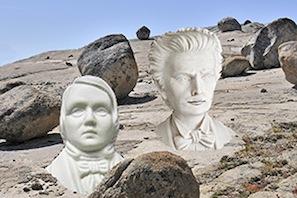
Comfortable on the podium, commanding yet avuncular, Semyon Bychkov led substantial performances of two Richard Strauss works and Robert Schumann’s Second symphony Wednesday night at Davies Symphony Hall. The San Francisco Symphony subscription concert began with a satisfyingly mature view of Strauss’ depiction of the great roué Don Juan. Flawlessly negotiated by pianist Kirill Gerstein, the thickets of the composer’s early Burleske concerto concluded the first half.
Many conductors use Don Juan solely as a flashy racecar to show off an orchestra, with a foot heavy on the pedal and thoughts preoccupied with the finish line. Bychkov, in contrast, took pains to show us some of the scenery on the way. His was a Don Juan who was more than a slam-bam-thank-you-ma’am, but a personage relishing all aspects of the conquest, and hoping his partners would too. This was especially manifested in Bychkov’s nuanced rendition of the pastoral section about a third of the way into the work. I was especially impressed with Bychkov’s handling of the concluding bars: By slowing down a bit more than is usually done, and putting in a judicious pause not marked in the score, he made Don Juan’s death seem a lot sadder, and not the afterthought that often comes across from a strict reading of the measures.
Earlier Strauss Has Its Moments

The brilliance of Don Juan becomes especially apparent when hearing Strauss’ work of only three years earlier, when he had just turned 21. In Burleske, the orchestration, while perfectly competent, and even inspired with the employment of the timpani as a melody carrying instrument, in no way shimmers in comparison with that of the later composer. The piece is gravid with material that seems to take far too long to come to fruition, even though the music lasts only a minute longer. The rather thick, Brahmsian piano part has to be played bombastically at times to come across. Nevertheless, there are some beautiful moments, the interplay between timpani and piano, and especially the transformation of a secondary theme that becomes a gorgeous third subject, one which may have inspired Leonard Bernstein’s “There’s a place for us.”
Gerstein tackled the music with plenty of verve and technical perfection. More bombast in the thickest sections, such as a performer like Yefim Bronfman is capable of providing, might have been helpful, but was certainly not necessary for a completely enjoyable experience. As usual, the Symphony, as with Don Juan, contributed their top-notch ensemble work. Kudos, again as usual, especially go to timpanist David Herbert.
In lesser hands, the Schumann Symphony No. 2 in C Major, Op. 61, not one of the composer’s largest melody banks, can come across as a bit turgid. Not so with Bychkov, who piloted deftly, developing interest in the formal and narrative aspects of the music in all its movements. The Symphony strings excelled in the Scherzo, where the texture rudely exposes any lack of simultaneity. I was interested in annotator James Keller’s referral to the motto horn call appearing throughout the symphony as a “premonition of Bruckner.” I felt a different premonition with the one great melody in the symphony (not counting the passing “For he’s a jolly good fellow” in the Scherzo). The contour of main theme of the third movement bears a lot of similarity to that of the second theme of the third movement of Bruckner’s 9th.
The audience reaction to the contents of the concert was surprisingly lackluster considering the quality of performance. Thank goodness a fair number of Schumann fans kept Bychkov returning for more bows even if the majority of the audience was on the way out after the first two. This conductor reminds us there is more to conducting than energetically flailing one’s arms about.

